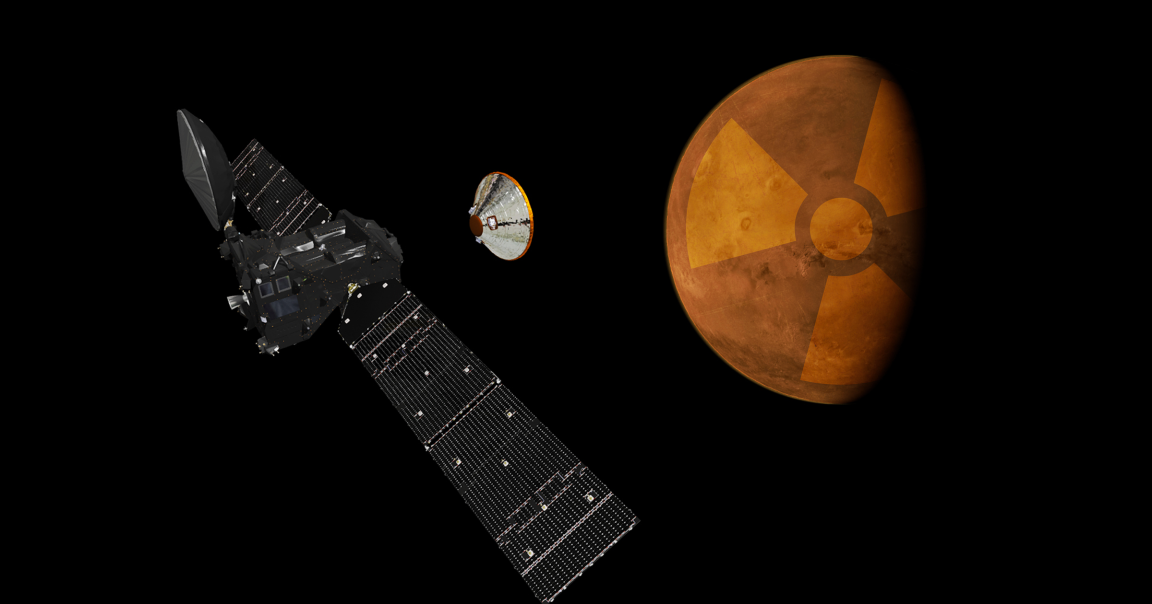
RADIATION STATION
We already knew sending crewed missions to Mars would be dangerous. Now we know that it will blast them with horrifying doses of cosmic radiation. The silver lead lining: now at least we know exactly how much, so we can prepare.
In 2016, the European and Russian space agencies launched the ExoMars Trace Gas Orbiter (TGO), an orbiting probe designed to monitor the Martian atmosphere. The TGO also collected radiation data during its journey from Earth to Mars — the same journey we hope to send astronauts on within the next decade — so now we know how much radiation they’ll encounter along the way.
LEAD VEST
According to the researchers’ calculations, which they presented this week during the European Planetary Science Congress, the 12-month round-trip journey to Mars would expose astronauts to 600 mSv of radiation.
That’s the equivalent of about 600 chest x-rays. It’d account for 60 percent of the astronauts’ career radiation dose limit, the maximum amount of radiation exposure experts predict they could withstand without substantially increasing their risk of cancer, central nervous system damage, and other catastrophic health problems.
CHOP’N’CREWED
The TGO calculations don’t even take into account the radiation exposure an astronaut will experience while on Mars or in its orbit — just the radiation they’ll suck up along the journey.
We’re clearly going to need to figure out some way to protect astronaut crews from this dangerous radiation. Knowing exactly what they’ll be up against is a crucial step toward making that happen.
READ MORE: Orbiter Data Confirms Manned Mars Missions Face Severe Radiation Hazards [New Atlas]
More on radiation: Here’s How Future Astronauts Could Survive the Radiation of Space